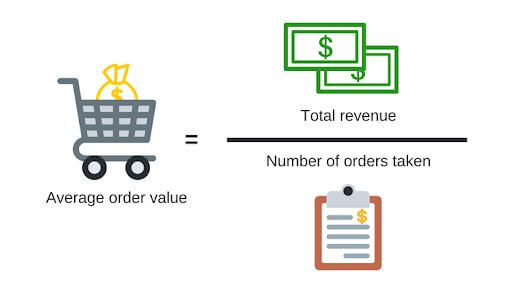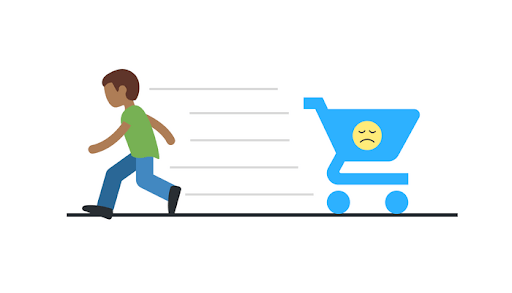Do you own an e-commerce store?
And, are you making decent money from your online business?
What if I told you that how much you’re making right now does not matter!
Confused?
Well, what matters is, how much more money will you be making this year.
Take a look at these two growth graphs.
Is your graph like this?

Well, I have bad news for you.
It’s supposed to be something like below.

What do you need to do in order to get consistently increasing sales?
You’ll have to take a closer look at your website.
What do I mean by a closer look?
You have to monitor some vital metrics of your e-commerce website and work upon them.
Improving these metrics will improve your conversion rate.
Below-mentioned is the top ten e-commerce metrics that you must track if you are also anticipating quick growth and high revenue generation from your business.
Conversion Rate Optimization (CRO)
Being an e-commerce website owner, you must be lusting for conversions.
CRO is probably the most vital e-commerce metric.
Conversion Rate Optimization or CRO is the process of optimizing the conversions on a website. These conversions can take anywhere on a website. It can be on a blog, pricing page, homepage, and all other landing pages. All the mentioned pages can be optimized to get higher conversions.
Here are some valuable areas which can be worked on to boost the conversion rate of your website. Let’s take a look at them.
- Customer feedback/online surveys: Collect feedback from your visitors via exit surveys, and other survey forms. Doing so will give you visitor insights on which you can work upon and indeed improve your CRO.
- A/B testing: It is basically setting up 2 versions of the landing page. Each of the landing pages will have different elements from the other. Your site will then present one of these two pages to half your traffic and the other to the remaining half. You can then see which one gets more conversion and use it has your primary landing page.
- Cart abandonment analysis: Analyze the reasons for your potential customer to abandon the cart and make changes to your website accordingly.
Mentioned above are some of the vital areas which can be worked upon to boost the conversion rate. A conversion rate optimization tool will help you analyse and fix leaks in your sales funnel.
Repeat Purchasing Rate
Wouldn’t you want your customers to come back again?
While getting an adequate conversion rate is great, it alone does not provide you a clearer picture. Since it is an e-commerce website, there would be a lot of people visiting your website only for once, and then, there would be such who would be returning again and again to make a purchase. That is why this e-commerce metric is important to track.
Repeat purchase rate can be understood better with the following formula,

By evaluating the repeat purchasing rate, you would be able to determine whether to invest less or more in the ongoing marketing strategies.
If you think that the number of customers is constant, however, there is an increase in the number of orders, then you have successfully managed to create a loyal customer base. And hence, you can invest in attracting more customers.
According to the reports, the renowned online portals get their half the revenue from returning customers. So, keep an eye on this metric for better results.
Gross Margin
Another important e-commerce metric is the gross margin. One of the easiest ways to calculate it is by deducting the number of sales and the cost of goods sold.
In a simple way, it is the profit that you earn by selling each product. According to the experts in the industry, a higher gross margin will help you attain a satisfactory amount of money at the end, which can be used to accomplish other business goals.
However, a downward going gross margin may lead to some serious issues in the long run. So, how would you be sure of having a good gross margin?
According to research, if a company is generating the revenue of at least $1 million, then the gross margin would be 40%. However, for those who have revenue under $100,000, an adequate amount of gross margin would be 30%. Again, these numbers may vary as per your revenue and requirements. Still, don’t forget to track this important metric.
Cost of Acquiring Customer
Moving further, the cost of acquiring a customer (CAC) is again an important metric that you should be neglected.
CAC is nothing but the amount that you have spent to get a new customer. You would not want the cost spent to be higher than what the customer is purchasing from your website, isn’t it?

To calculate CAC, you can take a particular time period, find out the total marketing budget that you had spent within that period, and divide it with the new customers that you had acquired within that period.
However, make sure that you are not counting in the repeated customers but only the new ones.
This metric can turn out to be beneficial in assessing the results of your marketing strategies. Right from how you did to how much you spent and what it fetches you at the end, this metric will provide you with all the answers.
Average Order Value
One of the great ways to increase the CRO and generate more revenue from your e-commerce store is by charming customers with what you have to provide and by encouraging them to buy additional stuff as well. To do this, your focus should be fixed upon enhancing your store’s average order value (AOV).
Mathematically,

Also, there are several ways that can help you enhance the AOV; and thus, improve the conversion rate optimization, such as:
- Upsell additional products
- Sell products in bundles
- Provide a discount on a minimum spent amount
- Run flash sales
- Follow-up with customers to convert them into repeat customers
Email Metrics
Undeniably, email metrics is one of the most crucial marketing channels for an e-commerce business. Growing the subscribers’ list and keeping it on a constant level is surely doing to divert a lot of traffic to your website, resulting in higher revenue.
What are the important email metrics?
- Click-through rate
- Open rate
- Unsubscribe rate
- Bounce rate
Most businesses don’t have any idea about tracking email marketing in the context of revenue and analyzing it against unsubscribes’ costs.
For example: if you managed to get 10 subscribers and for each one of them, you had to pay $1, then the email campaign would have cost you $10.
Analyze the email metrics and conduct experiments with the subject line and email content to improve your email metrics.
Website Traffic
It’s said that,
“It is much easier to grow your business by getting more traffic than playing with your conversion rate ”
Who does not like watching the traffic going higher?
Not just does it increase the chances of attaining a higher conversion rate, but it even enhances the search engine ranking.
The more the traffic, the higher will be the sales.
However, initially, it might seem a bit difficult to drive an appropriate amount of traffic to your website. So, to do so, you can:
- Use social media
- Make the website search engine friendly (SEO)
- Utilize influencer marketing
Keep an eye on points like:
- Bounce rate
- Unique visitors & returning visitors
- Time spent on site
- Traffic source
- Page view on every visit
HumCommerce is an excellent tool to track the above-mentioned metrics and more.
Cart Abandonment Rate
One of the major problems that most e-commerce companies have to face is cart abandonment. The situation is so worse in certain industries that the percentage of cart abandonment is as higher as more than 80%.

There might be several reasons behind the abandonment of your customers. Right from technical problems to trust issues, unsafe payment options to bad delivery choices, the list can go on and on.
Analysing and evaluating the size of cart abandonment problem for your website will provide you an edge so that you can resolve this problem on time and enhance the process of checkout for your customers.
To check out the cart abandonment rate, you can follow the equation of dividing the total complete purchases with total shopping carts created.
Apart from that, there would be several other steps to complete before the buyer would hit the buy button. So, make sure that you are evaluating every step and getting to know where exactly customers are abandoning your website.
Cost of Search Terms & Keywords
Having an e-commerce portal that is competent enough to rank higher in the search engine is one of the best things, right? Since almost half of the organic traffic would be coming from Google, Yahoo, Bing, and other search engines, there would be no reason to neglect this metric.
However, if you are taking up the paid route, you would have to assess the cost that you are spending on every keyword and search term.
There would be no use of spending a lot of money on such researched keywords that would not be generating adequate traffic.
So, once you have analyzed the performance, you can then think of investing in inexpensive keywords that have the potential to drive high traffic. And then, you can even put in efforts to enhance the organic traffic through expensive keywords or search terms.
Customer Lifetime Value
Being an e-commerce business owner, there would be several tactics and techniques that you would be applying to keep the marketing game stronger than before.
However, if you already have a bunch of satisfying customers, keeping them delighted just so they can come back and shop for more products is always inexpensive than luring new customers.
Therefore, it is nothing but sensible to keep a track on whether your business is driving second, third, and more purchases from the same customer or not.
And, to do so, assessing customer lifetime value (CLTV) is of utmost importance. Calculating CLTV is simple. You just have to multiply average order value with an average number of purchases in a particular year.
Summary
As an e-commerce marketer, these are some of the essential e-commerce metrics that you must keep a track on.
Apart from these few, there are several others that will help you distinguish your goals and understand your market in a thorough manner.
However, until your perspective is reserved for the right set of metrics, you will always be sure how to constantly improve your business. So, start with these aforementioned metrics today and drive business and revenue like a pro.